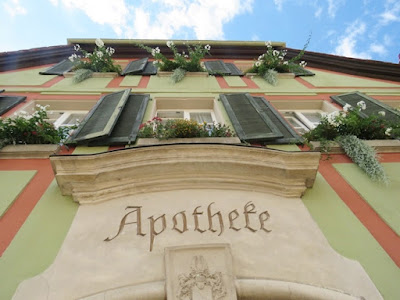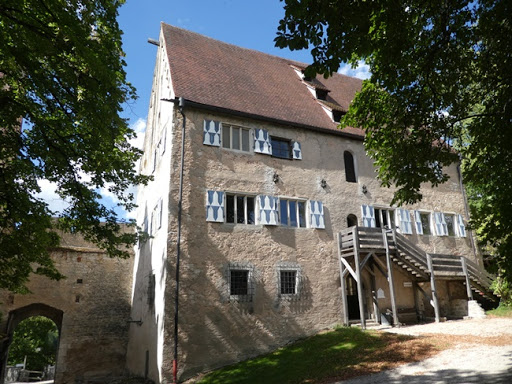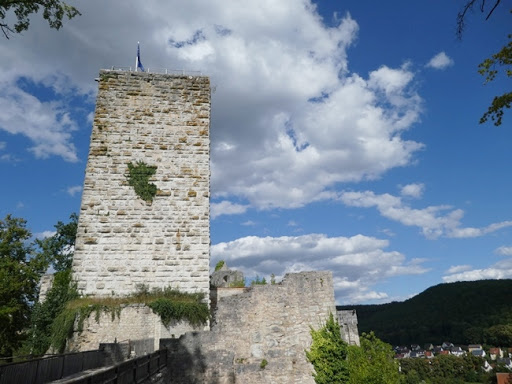Pappenheim

Pappenheim is situated on the river Altmühl, 11 km south of Weißenburg in Bavaria. Its major attractions are its mighty castle standing proudly on a hill, willow church built by a group of youth, historical buildings, churches, etc.
We felt welcome when we entered into Pappenheim. A stone lady stretched her arms to welcome us. A half bald guy showed us the way. The town was quiet during the weekend. Colourful buildings saying hello to every pedestrian. The pharmacy Hoechstetter Apotheke Pappenheim in a green and red building was charming with flowers at every window. The Neues Schloß and Rotes Brauhaus added liveliness to the sleepy town.

Empowered by the “Reichsministerialengeschlecht” throughout the Middle Ages, marshals and counts had a lot of privileges. The chief (Gottfried Heinrich) of Pappenheim occupied the castle above the town. Views over Altmühl and the town are magnificent.
Fights, wars, disputes always got together with the Castle of Pappenheim. Exhibits in the museums within the castle tells you the stories. The most impressive was the torture room. Heavy air inside along with the torture tools still transmitted a sense of horror.
Fortunately, the terror could be offset quickly with the gorgeous views of the castle itself and its surroundings. We enjoyed the panoramas very much.
We visited two churches in the town centre. One is Evangelical-Lutheran Church. It is already 600 years old. The baroque parish church is built in a simple Protestant style. On the walls are a number of tombs of noble officials, deans and epitaphs of the Count's family.
The other church is the St. Gallus Church (Galluskirche). It is dated back to 9th century. The Romanesque church was remodeled in Gothic and Renaissance styles. In the centre is the eye catching St. Mary altar. In the courtyard were some modern sculptures.
It was time to leave. One can see parts of the Altmühl. Often, people enjoy boating in the river. It is tranquil and beautiful.
Last but not the least is the Church of Willow (Weidenkirche). It is an opened and natural church. Willow branches were plugged into the ground. The construction was undertaken by teenagers and the Evangelic Youth of Bavaria. The lovely church can accommodate up to 150 people. But it is not opened in winter and rainy days. It will be romantic and unforgettable if you have your wedding there.






















Comments